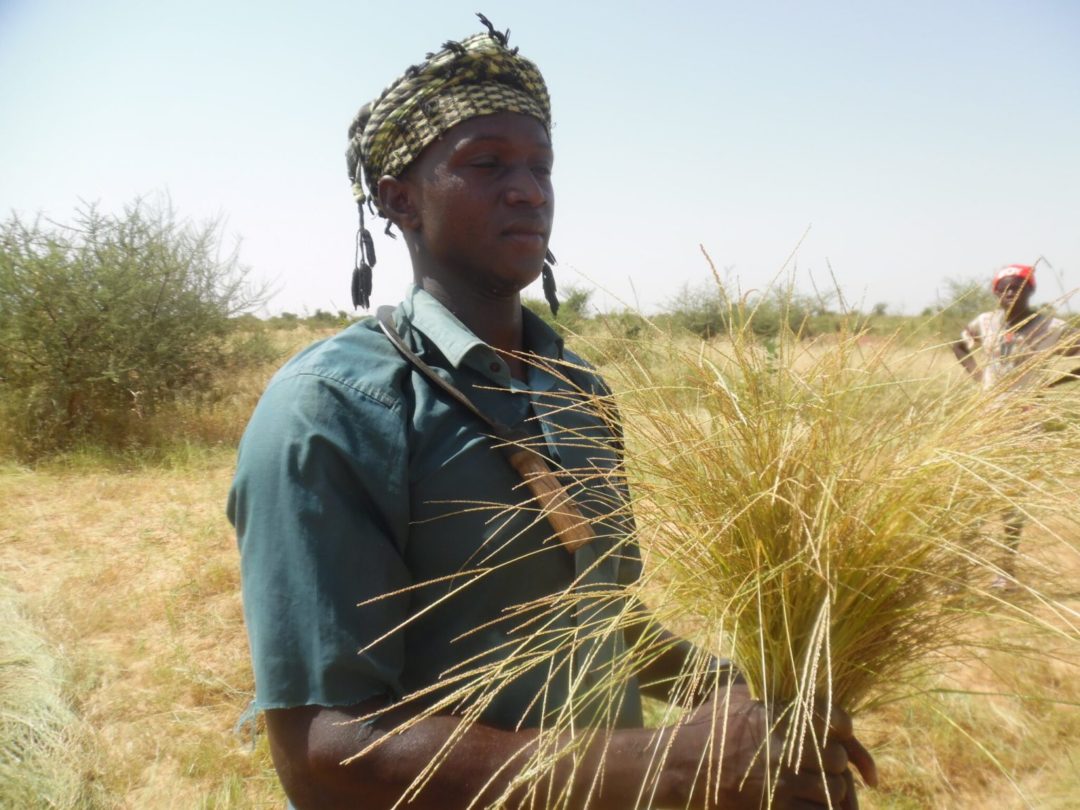Read full article By Augusta Dwyer @ Landscape News Photo Credit: Hamidou Guindo
found that farmers can almost double their yields of fonio by adapting principles from CRFS’s System of Rice Intensification (SRI) methodology.
Originally developed in Madagascar in the 1980s, SRI practices emphasize the cultivation of a stronger, more productive plant, and to achieve that, encourage farmers to plant seedlings at an early stage, give them more space to establish root systems, improve soil conditions with organic matter, and apply a minimum of water instead of flooding. Weeds are controlled and incorporated into the soil by using a simple push-weeder. Increasing yields by anywhere from 20 to 200 percent, SRI principles have already been applied to crops as diverse as wheat, finger millet and sugarcane.
What’s more, the program’s partnership with Yolélé Foods – a hip company based in Brooklyn, New York that brings West African smallholder ingredients to the American market – has led to a major advance in processing the hard-to-mill seed, opening up markets both local and global.
Plot summaries
3-A Sahel director Hamidou Guindo selected five villages in the Mopti region of Mali to test SRI principles on fonio, says tropical agronomist Erika Styger, who heads the Cornell program. Two men and three women farmers in each village took part in the project, staking out three separate 100-square-meter plots.
“The first plot was the control plot,” she explains, “planted in the traditional way farmers grow fonio.” After light tilling, the fonio seeds were broadcast, or scattered by hand, over the land and, as per custom, given no organic fertilizer. In the second plot, the same planting method was used, but a light dose of nutrients from cattle manure was added. In the third plot, SRI techniques were employed, including line seeding with a special rake to make shallow furrows, spaced planting, and fertilizing with small amounts of cattle manure. Weeding was done with a mechanical push-weeder instead of by hand.
The results after two years of study were striking. While yields in the second type of plot were higher than in the control plot, those in the third plot were almost double. Significantly less seed was needed (12 kilograms per hectare compared to 20) and plants were taller, stronger and had more tillers, or shoots, sprouting off from the main stem to produce more seeds.
“The farmers had not used manure with fonio before,” says Styger, “but they noticed that it improved soil moisture, and that the little furrows that appeared when using the push-weeder allowed for water to collect and infiltrate the soil after a rain.”
For Styger, those outcomes are a clear indication that agronomists should focus more on so-called minor crops, like fonio, as a tool in the development of future sustainable agriculture strategies. “It’s important to look at what people have been doing for thousands of years,” she says.
As global weather patterns and higher temperatures heighten food insecurity throughout Africa, smallholder and subsistence farmers are more vulnerable than ever. “With climate change, you never know what will happen,” she points out. “Will there be a drought at the beginning of the season? In the middle? Will we have floods? So the more [crop] diversity, the better.”

